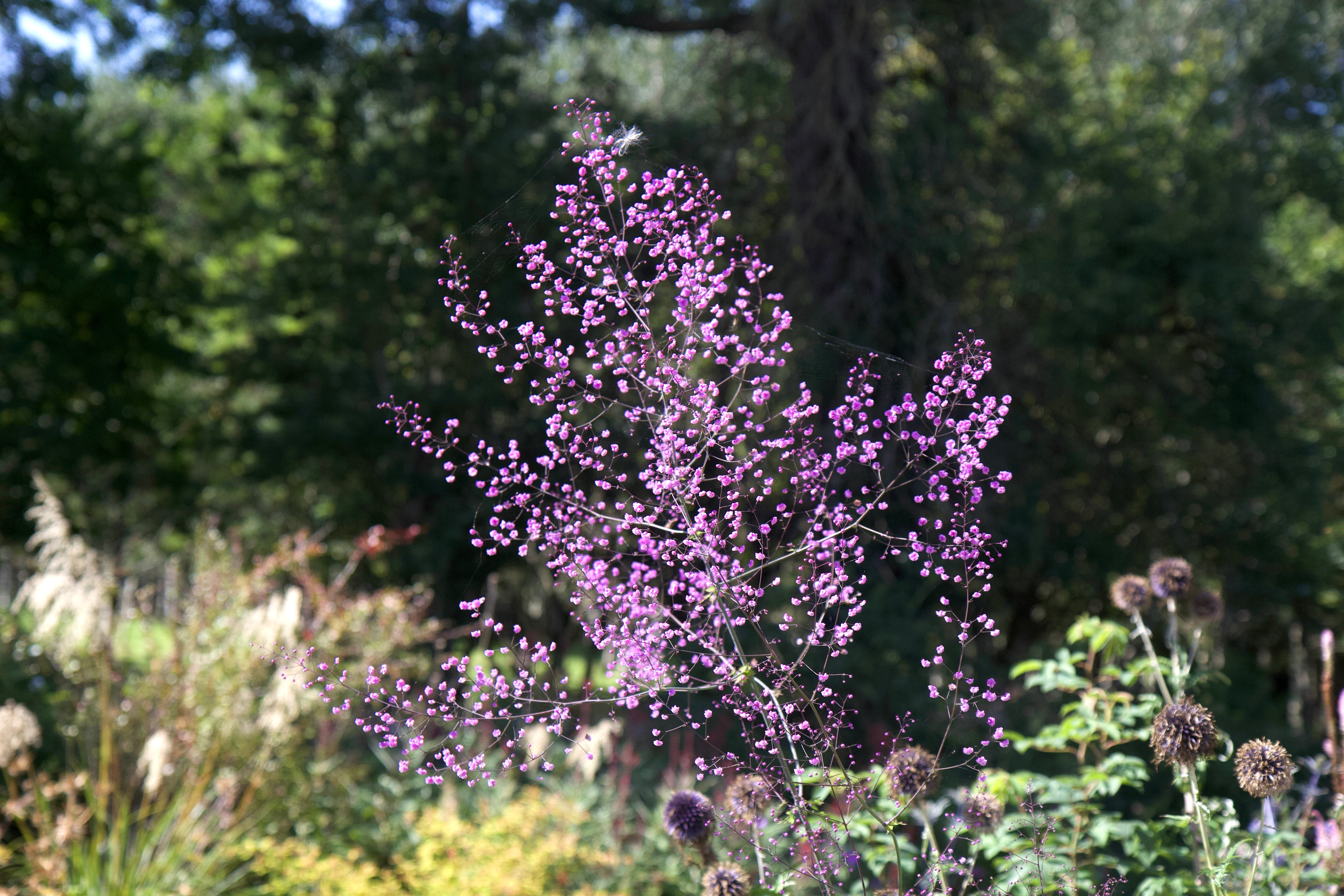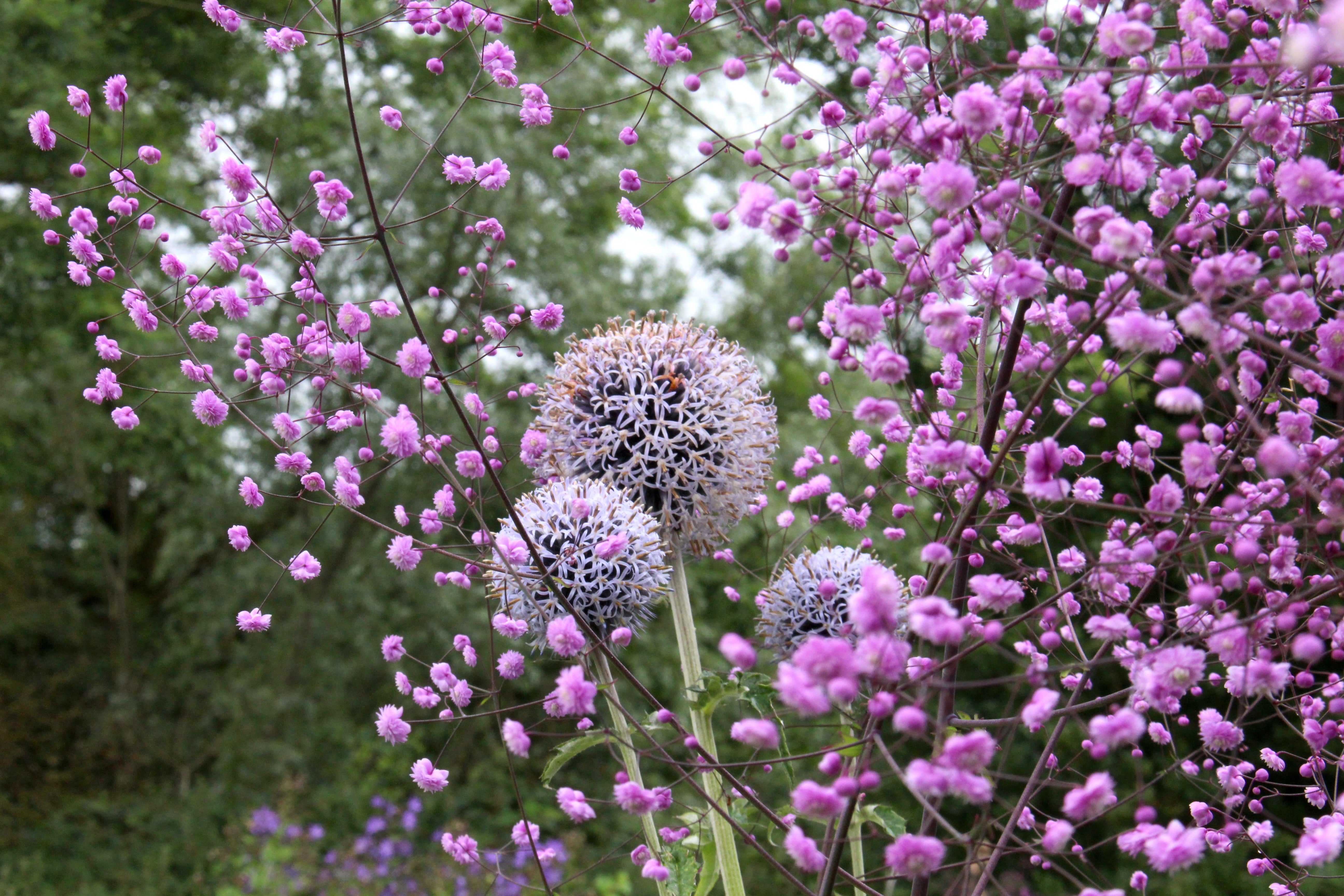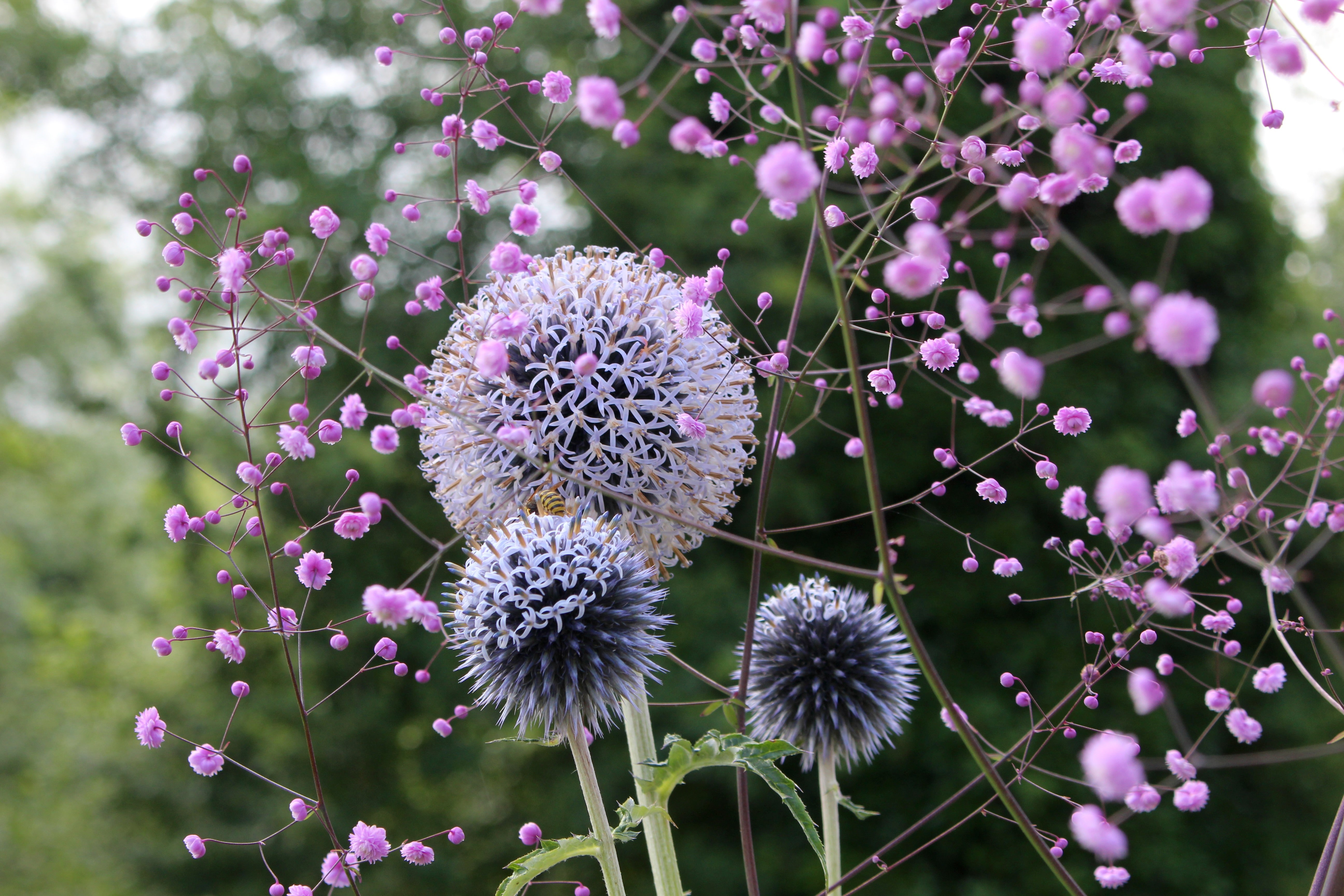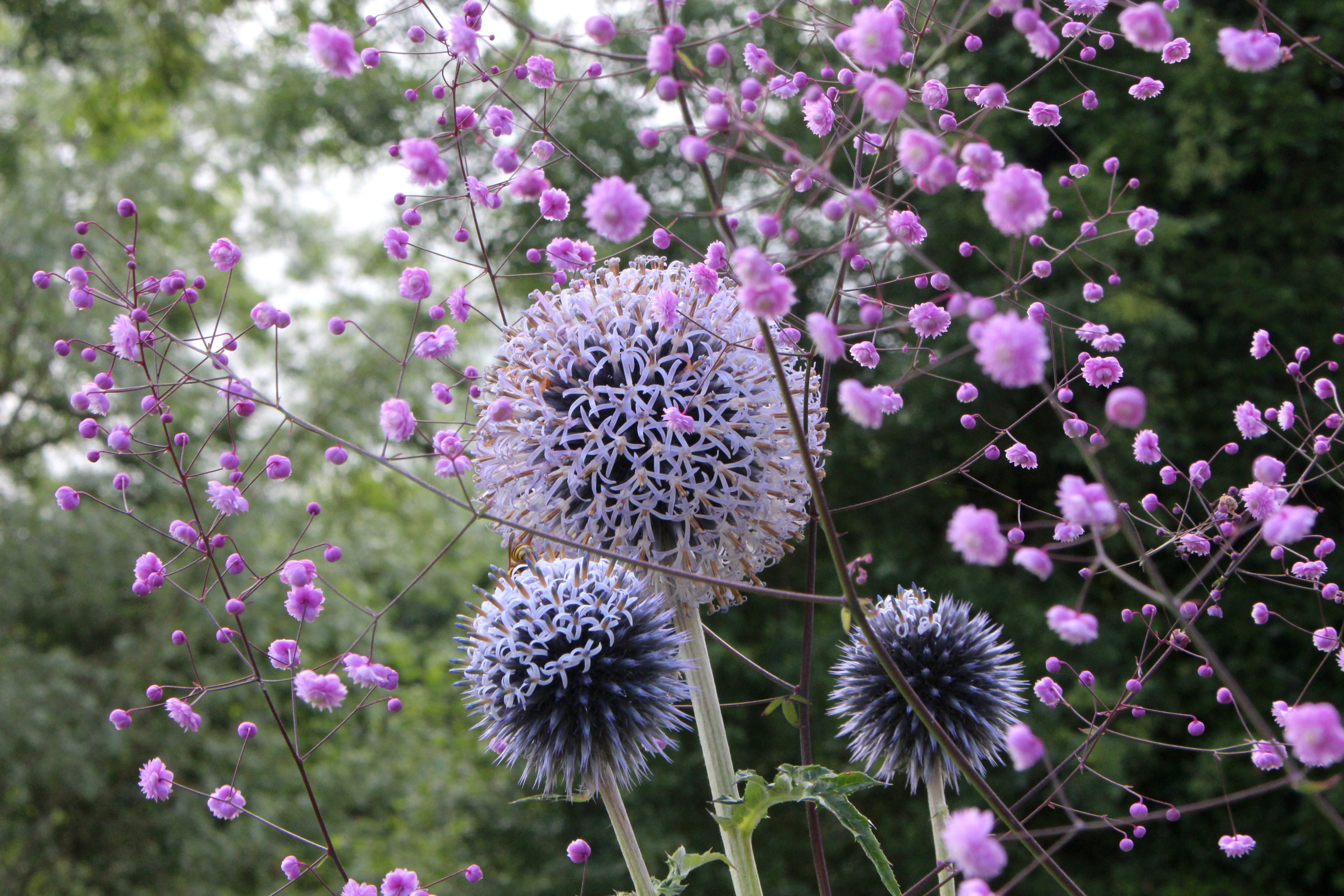Thalictrum delavayi 'Hewitt’s Double' (d)
Approx. 0.5 litre pot
About this cultivar:
Thalictrum delavayi 'Hewitt’s Double' is a new-ish introduction but fast becoming a classic. Airy fairy pale purple double flowers with yellow eyes adorn this Thalictrum’s tall flower stems. Can flop over a bit but looks best grown through plants for support anyway. Try combining with Japanese Anemone and/or Echinops for support and/or cool looks.
Species named for l’Abbé Jean Marie Delavay (1834–95), French missionary and collector of plants in China.
The companion plant in some of these photos is Echinops (the big blue flower ball = Echinops! The small pink flowers = Thalictrum delavayi 'Hewitt’s Double'!)
- Position: Full sun, partial shade
- Soil: Almost any soil, grows well in Ballyrobert
- Flowers: August, September, October
- Other features: Grows well in Ballyrobert
- Hardiness: Fully hardy, grows well in Ballyrobert
- Habit: Clump forming, Columnar or Upright
- Foliage: Deciduous
- Height: 120 - 180 cm (4 - 6 ft)
- Spread: 60 - 90 cm (2 - 3 ft)
- Time to full growth: 2 to 5 years
- Plant type: Herbaceous Perennial
- Colour: Green, pink
- Goes well with: Japanese Anemone, Echinops
About this genus:
Thalictrum (t ha-ik-trum) is a genus of 120-200 species of herbaceous perennial flowering plants in the buttercup family (Ranunculaceae) native mostly to temperate regions. Once upon a time, the newborn infant was placed upon a pillow filled with Thalictrum to ensure a prosperous life. Thalictrum come from the Greek thallo which means “to flourish,” and it does, with elegant foamlike sprays that resemble Baby’s Breath, and rounded, finely cut, compound foliage.
Despite their common name of "meadow-rue", Thalictrum species are unrelated to the true rue (family Rutaceae), but resemble its members in having the petiole twice or thrice divided. They are usually found in shaded or damp locations, with a sub-cosmopolitan range throughout most of the Northern Hemisphere and also south to southern Africa and tropical South America, but absent from Australasia. It is most common in temperate regions of the world, twenty-two species are found in North America.
The leaves are commonly glaucous blue-green in colour. The flowers are small and are apetalous; in other words they have no petals. They have have numerous long stamens, often brightly white, yellow, pink or pale purple, and are produced in conspicuous dense inflorescences. In some species the sepals are large, brightly coloured and petal-like, but in most they are small and fall when the flower opens or soon after.
Thalictrum is tolerant of a wide range of growing conditions, depending on the species. However, they generally prefer an moist soil in sun or part shade.








